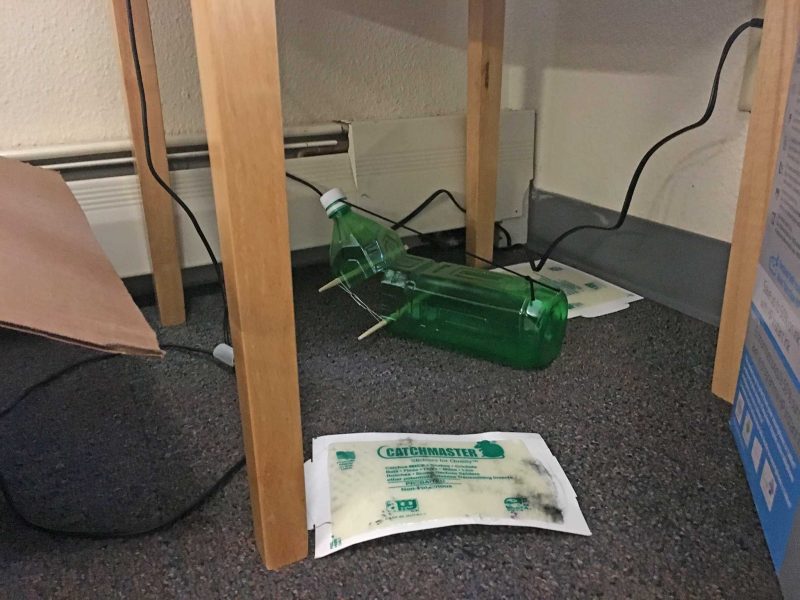The Towers at Centennial Square have recently been under scrutiny due to student reports of mice sightings, which some say began prior to the start of fall semester this year.
Mice droppings and damaged property like chewed cords are among some of the rodent-related complaints that students say contribute to an uncomfortable living environment.
“Living here I noticed there was an issue with rodents,” said Jamarc Allen-Henderson, a residential assistant for the Towers at Centennial Square. “When I moved in, there were droppings everywhere, and even now I see more popping up too. When I come back home I might see some on the kitchen floor.”
The Towers offer apartment style housing for SF State students with the option of a private kitchen, living room and bathroom at an estimated cost of $12,888 to $16,232 per academic year, which equates to roughly $1,288 to $2,091 per month. With the additional amenities, the Towers are considered to be escalated college dorms from the average single room occupancy, but some are saying their affluence has been overshadowed by mice encounters.

dorm in the Towers at Centennial Square on Wednesday, Sept. 28, 2016.
“I was living (in the Towers) over the summer and I started seeing them at the beginning of July,” an environmental studies major at SF State said. “At first I just started hearing scratching at night, and then that’s when I started seeing them. I saw them in my room, in the living room, scurrying down the hallways. It wasn’t just one, it was multiple and they were different colors.” Currently a senior at SF State, the student chose to remain anonymous in fear of backlash for commenting on the mice sightings.
Frank Fasano, interim associate vice president of facilities and services, has been in his position for 11 months and does not consider the mice sightings in the Towers a rodent issue.
“Any school of this size or any facility for that matter, will occasionally have pest control issues that pop up once in awhile,” Fasano said. “Any time there is a food source, you’re going to have pests, any type of pests.”
According to Fasano, the SF State campus already receives services from A-Pro Pest Control twice a week for preventative measures and does not plan to implement any additional services since mice sightings are rare.
“If we saw that we had to have a service more than twice a week we would implement that, but there isn’t a need for it,” Fasano said.
A-Pro Pest Control was contacted, but declined to comment on the current preventative program in place.
Though Fasano believes additional services are not needed, students are unsatisfied with current solutions. First-year student, Danielle Suit, requested assistance from facilities in hopes of putting an end to mice encounters inside of her dorm.
“All they did was tell us to call the service desk, and they just gave us sticky mouse traps,” Suit said.
Suit and her roommates aligned the provided sticky mouse traps alongside their living room walls, but remain fearful of future encounters.
“I’m terrified of mice, so I’m scared to death coming out here,” Suit said. “I’m just lying to myself and saying they’re not here.”
Allen-Henderson is also anxious of future encounters.
“I think it’s a major issue because now I’m getting paranoid to the fact that there might be one every time I sit by the counter. It has me on edge sometimes, and I don’t want to constantly invest in mouse prevention traps,” Allen-Henderson said. “It’s also a health issue because if there’s droppings everywhere, some people say it can be toxic.”
According to the Centers for Disease Control and Prevention, diseases can be spread through breathing in air contaminated with rodent urine and droppings. However, Fasano believes there are simple things students can do to prevent the sick and harmful possibilities that can follow mice encounters.
“We try to mitigate most of this through education,” Fasano said. “Just like in your house, you don’t want to leave open containers of food and sugars because you’re eventually going to attract some sort of pest. We don’t see the need to implement any further actions, but if we ever did, we would take measures to do what we needed to do.”







